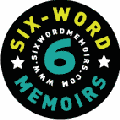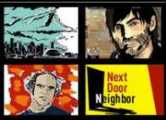Back of the House: A Photo Essay By Michael Harlan Turkell
July 11th, 2007 by kathyIt’s easy to like Michael Harlan Turkell. When the New York City-based photographer walks into Public (voted Best Brunch by TimeOut New York, by the way) he warmly greets the staff, already hard at work prepping for the long night ahead. It’s a little after 10 in the morning. Turkell apologizes for running late (he’s not that late). He was at the Greenmarket in Union Square and walks into the eatery carrying bags stuffed with baby Chioggia beets, green garlic, baby fennel, sugar snap peas, and French breakfast radishes.
Turkell sits down, sips on his coffee, and smiles, totally at ease. After this interview, he’s going to photograph pickles for Wheelhouse Pickles in Long Island City.
Talk about a cool gig.
At 26, Turkell has done something that most of us only dream of doing. He’s managed to combine his two loves, food and photography, and create a job for himself that actually pays the bills. He’s a self-described “culinary photojournalist.” And he’s happy.
Turkell’s latest project, Back of the House, is a tribute to the men and women who work behind the scenes in some of New York City’s restaurants—the folks most of us rarely consider as we’re inhaling pan-seared, sesame-encrusted Ahi Tuna steak. He’s shot in more than 100 restaurants so far, including Public, Butter, WD-50, Masa, and Daniel. “I want to illuminate the back of the house, I don’t care to illuminate myself,” says Turkell. “I’m not doing the hardest part of the work; I’m just lucky enough to be around it. I’m trying to open up lines of communication.”
Previously selected for the upcoming 25 Under 25: Up-and-Coming American Photographers to be published next spring, Turkell talks to SMITH about his series, a fish’s head, and life as a culinary photojournalist.
What kind of camera are you using?
The Nikon D200. It keeps the overhead low because it’s digital and you can shoot as much as you want.
When did you start taking pictures?
I didn’t even own camera until I was 21. I dropped out of the first school I went to. I went to [Boston University] for math and science and came back to New York and went to community college. It happened to be an elective that filled a spot. And I enjoyed it.
You used to work in kitchens, now you’re behind the camera full time, why the switch?
It was a combination of things. I had fallen and hurt my knee. I’ve had two ACL surgeries, so that constant pivot put that strain. The hours. It’s hard to hold on to not just relationships, but even friendships and acquaintances. All the people you hang out with are part of that counterculture. And I love the morning. I love being able to see the light of day. So I think the combination of those, and the fact that I was getting my BFA in photography, I thought, I might as well pursue this… And the way I wanted to learn, I didn’t necessarily want to be in one place. I was always looking for new opportunities, so it wasn’t hard leaving it because I know I can so readily come back to it.
How’s it going so far?
I’m still trying to get in magazines. It’s the steepest learning curve I’ve ever had. Cooking comes naturally to me, sometimes photography does as well, but the business doesn’t necessarily. I’m just trying to please the people. And I’ll bend over backwards for little or no pay sometimes just to make sure somebody is happy, and that isn’t necessarily the industry that thrives [in New York City]. But I like that I’ve been able to incorporate that hospitality that I learned in restaurants into photography.
Sounds like you’ve found yourself a dream job.
I’m still so interested in food and restaurants, and I didn’t want to stop learning. I pick kitchens and chefs and subjects because I’m interested in them. And I always wanted to have that as the defining drive behind my photography, that I’m actually interested in the subject that I’m photographing, that there’s some kind of deeper connection rather than a superficiality of the image.
It’s nice that I am able to get paid and also be in these kitchens that I wanted to cook in and learn from. It’s odd to say that I’ve actually made a job for myself. It’s still a struggle month to month, [but] I’m bombarded with work right now, which is a great thing.
Why did you want to capture the drama behind the scenes?
After having worked in restaurants myself, I know [the back of the house] sees little light of day, and also few accolades from diners. Not that I needed a pat on the back. It was just something that was never really shown or illuminated to people outside of the kitchen. It was easy to talk to people that I worked with, there was a comradery, there was a common ground, and understanding, but to tell someone what you did… there was very little illumination as to what went on. I thought it was an important thing to show and preserve. You always see food writers, but I didn’t see many—well, this is another self-proclaimed term—culinary photojournalists.
What’s the response been like?
I still shoot primarily shoot for the chef and for the people in the kitchen. And I’ll show them the photos, ask them what they think, if they think it’s a true depiction, and shows them in the right light. I will not show anything defamatory. There’s a true honesty in the industry, and I’m trying to keep that integrity so I only seek out places that I think have those values.
What makes a good image to you?
I think all of those values: honesty, integrity. I don’t think [the image] should have to be explained necessarily—that there’s a very distinct caption to it, that everyone comes to a common understanding of what is there, and something the people I took it with, among, and for agree upon. Not to say that an image has to represent some kind of majority. But I’m trying to create more archetypes, things that represent very specific points.
What do you consider off-limits to shoot?
It depends on the kitchen. If they say its off limits, I don’t photograph it. Once they feel comfortable with me, I don’t know if there’s much that’s off limits. There isn’t one specific thing across the board that everyone says don’t take a picture of. There are points in service where they’re like, “Can you stop,” and I’m like, “Of course.”
What’s the funniest or strangest thing you’ve seen through the viewfinder?
Once was actually right here [in Public]—it was around 9pm, which is usually a pretty intense time during service. It was busy, but a guy comes in the kitchen with a big black garbage bag—they call him Jersey Dan or just Dan, he’s a friend of the restaurant. He opens up the bag and in it is the head itself, of a yellowfin tuna, as big as my torso. I think it was a yellowfin tuna. But in the middle of service they just put it on table. I think they made a quick tartare. That was awesome. I think he’s brought in venison before—the whole deer. I think that was during the middle of service, too.
Ever miss the money shot?
No. I’ll just come back and try to get it another day. People are always going to eat. There have been plenty of times where I know I just missed it by a second, but that’s why I revisit and haven’t stopped shooting.
From whom, what, or where do you derive inspiration?
Like everybody else, I love to travel. And I’m inspired by simple, little things—like a neighborhood in Brooklyn that I’ve never been to. One of my greatest passions is being a pedestrian sometimes, strolling about and looking at minutiae. Just constantly learning. Right now I’m trying to get a wine palate. My girlfriend works for Food & Wine, and I’ve always been a beer guy, so just understanding wines is overwhelming. But I know what I like now. And I love factoids and little interesting quips and phrases; I just like little idiosyncrasies.
What’s the picture you’d most like to take?
I don’t know yet. I don’t think I ever want a single image to represent me. I shoot in series and try to release them as such. And though you look to have one picture that encapsulates it all—it’s great to have that single raw ingredient—I like putting them all together. That’s what I like about this project, it’s completely amendable and malleable, and it has so much flex to it that it’s not defined yet, which is really nice. I like it all. I like the combination.
If anyone could take a picture of you, who would it be?
I’m addicted to this guy Erwin Wurm. He’s very conceptual. He does these one-minute portraits. And I love all of the minuteness of it. The images speak to how quickly art can be made—and how long it can last afterwards.
What are the sites, photocentric or not, that you most love online?
Eater.com. This guy Matt Bites he’s not only very fun to read, but he’s also an art director/photographer, and his images are just outstanding. But I hate saying web site this, web site that. I’d rather tell people where to go.
Where should they go?
In New York City, the Greenmarket, go to the Greenmarket, and rather than see something and buy it because you think its hot and fresh, taste it too. There are amazing specialty food stores. There’s a place called Sahadi’s, which is a spice trader on Atlantic Avenue. Awesome. Kalustyans, which is here in the City in Murray Hill. JB Prince for kitchen supplies. Kitchen Arts and Letters in the Upper East Side, it’s not just an antiquarian cookbook store, but they have some of the best international cookbooks. The James Beard House. They do dinners. Visiting chefs come from around the world, and you can go have dinner and taste an amazing array of foods.




